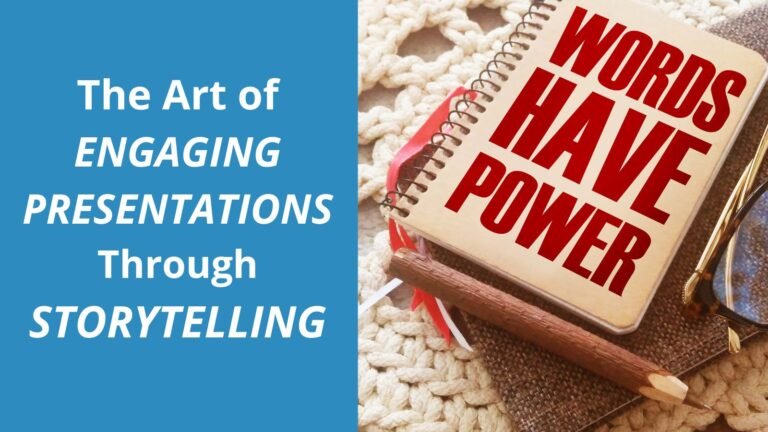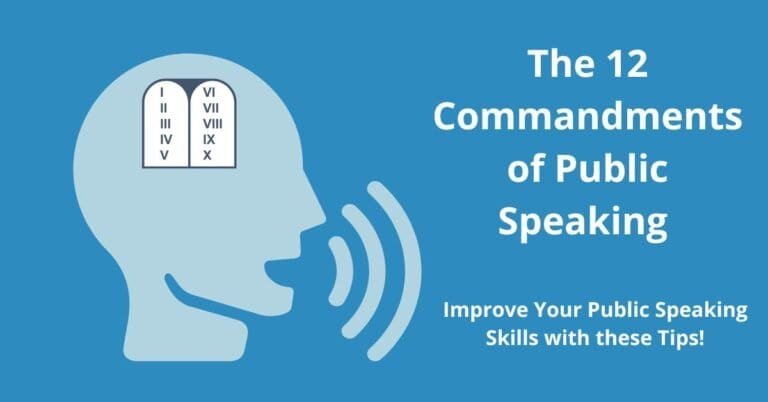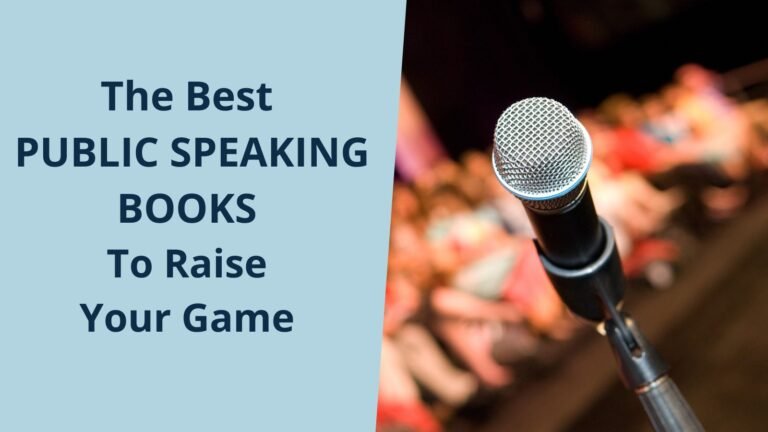Mastering Body Language in Public Speaking: A Practical Guide
In the realm of public speaking, words are just part of the story. The true narrative is written in the language of the body — a language of confidence, authority, and connection. Mastering the art of body language in public speaking is akin to adding vibrant colors to a black-and-white canvas, transforming ordinary speeches into compelling performances that captivate audiences. The unspoken dialogue can either elevate a speech to greatness or diminish its impact.
This article delves deep into the nuances of body language, dissecting its impact on communication and revealing the secrets behind influential speakers. From the commanding presence emanating from an upright posture to the magnetic pull of confident eye contact, every gesture and expression has a tale to tell. We’ll explore the subtle dance of vocal variations, the eloquence of hand movements, and the challenge of managing the nervous energy that often accompanies public speaking.
But it doesn’t stop there. We’ll navigate the intricacies of adapting body language to diverse speaking scenarios, from intimate boardroom meetings to grand stages, and even the virtual world. Each section is a step toward mastering the unspoken language, empowering you to not just speak but to communicate with impact. All the things you need to know to improve your public speaking.
Get ready to unlock the secrets behind influential speakers. Let’s embark on a journey to master the language of the body, where every gesture speaks volumes and every stance resonates with confidence.
The Impact of Body Language in Public Speaking
In the intricate dance of communication, confident body language takes center stage, shaping the narrative in ways words often cannot. Non-verbal cues, from a firm handshake to a subtle smile, hold a profound significance. They serve as the silent heralds of confidence, the unspoken emblems of authority, and the telltale signs of credibility.
Confidence, the cornerstone of impactful public speaking, finds its expression in the upright posture of a speaker. A straight back signifies conviction, while a relaxed stance exudes assurance. Confident speakers seamlessly blend verbal and non-verbal elements, their gestures mirroring the strength of their words.
Consider the magnetic presence of leaders like Barack Obama, whose measured gestures and unwavering eye contact convey mastery over the room. Oprah Winfrey, with her warm, open body language, fosters a sense of connection. These iconic speakers harness the language of the body, turning simple movements into compelling narratives.
Body language, often subtle and nuanced, amplifies the spoken word. A well-timed pause, a confident stride, a genuine smile — each gesture crafts an immersive experience for the audience. As we explore further, we’ll uncover the specific elements that transform ordinary gestures into powerful statements, enriching speeches with an unspoken eloquence that resonates deeply. Understanding this impact is not just essential for speakers; it’s the key to commanding stages and captivating hearts.
Key Elements of Effective Body Language
Posture and Presence

In the realm of public speaking, posture is the silent herald of confidence. The way you carry yourself speaks volumes before a single word is uttered. A straight, upright posture not only projects assurance but also signifies readiness, an openness to share knowledge. When your spine is aligned, shoulders back, and head held high, you emanate authority and conviction.
Maintaining an upright and open posture isn’t merely a physical adjustment; it’s a psychological shift. It signifies that you are present, engaged, and unafraid. Imagine your favorite speaker taking the stage with a commanding posture, exuding confidence from every pore. This projection of self-assurance captivates the audience before a single idea is conveyed.
Here are some practical tips for cultivating an impactful posture:
1. Grounded Stance: Plant your feet shoulder-width apart, distributing your weight evenly. This rooted foundation instills stability and poise.
2. Spine Alignment: Imagine a string pulling you gently upward from the crown of your head. Your spine should be straight but not rigid, allowing for natural movement.
3. Open Chest: Avoid crossing arms; instead, keep your chest open. This signifies receptivity and fearlessness.
4. Relaxed Shoulders: Tension in the shoulders translates as unease. Ensure your shoulders are relaxed, allowing your arms to move naturally with your gestures.
In essence, posture and presence are the cornerstones of a commanding presence. By embodying confidence through your physicality, you pave the way for a compelling and impactful speech, captivating your audience from the moment you step into the spotlight.
Eye Contact and Facial Expressions
In the symphony of communication, eye contact and facial expressions are the notes that resonate most deeply with an audience. Eye contact, that direct visual link between speaker and listener, is the bridge over which trust, understanding, and empathy travel. When you meet someone’s gaze, you acknowledge their presence, creating an unspoken connection. In public speaking, this connection is vital; it transforms a monologue into a dialogue, making the audience active participants.
Facial expressions, the canvas upon which emotions are painted, amplify the spoken word. A smile can convey warmth, while a furrowed brow might express concern or intensity. Skilled speakers utilize these expressions to illustrate narratives, emphasizing joy, sadness, surprise, or determination. Listeners, subconsciously attuned to these cues, become emotionally engaged, enriching their experience.
Improving eye contact involves practice. Begin with friendly, non-intimidating faces — perhaps friends or family. Gradually extend this practice to larger groups, mimicking the experience of speaking to an audience. In front of a mirror, explore various expressions, from excitement to solemnity, honing your ability to convey emotions naturally.
Here’s a simple exercise: as you speak, identify a few friendly faces in the audience. Engage with them, shifting your gaze periodically. Don’t rush; let your eyes settle on each face briefly. It might feel daunting initially, but with practice, it becomes a powerful tool for connection.
Mastering eye contact and facial expressions is an art. When executed with authenticity, they enrich your speech, making your words not just heard, but deeply felt, ensuring your message lingers long after you’ve left the stage.
Gestures and Hand Movements

In the eloquent language of public speaking, gestures and hand movements are punctuation marks, emphasizing words and infusing speeches with vitality. Each sweep of the hand, every purposeful gesture, adds layers of meaning to your message, captivating audiences and enriching your narrative.
Gestures serve as visual anchors, directing the audience’s focus and underscoring key points. A raised hand might signal importance, while a sweeping gesture can denote inclusivity, enveloping the audience in your narrative. For instance, Martin Luther King Jr.’s iconic hand gestures emphasized the urgency of his words, amplifying the impact of his message on civil rights.
Effective gestures are not random; they are deliberate expressions tailored to your content. A closed fist might denote determination, while an open palm signifies openness and honesty. Consider the context: in a story of triumph, your fists might pump the air victoriously, while in a moment of vulnerability, your hands might rest gently on your heart, inviting empathy.
Guidelines for purposeful hand movements include naturalness and moderation. Let gestures flow organically, mirroring the cadence of your speech. Avoid excessive or repetitive movements, ensuring each gesture serves a specific purpose. Practice in front of a mirror, refining your movements until they become an integral part of your expression.
When harnessed effectively, gestures and hand movements elevate your speech from words to a captivating performance. They breathe life into your narrative, making your message not just heard, but deeply felt, ensuring your audience remains enthralled till the very last word.
Vocal Variations and Tone
In the tapestry of public speaking, vocal variations and tone are the hues that bring words to life, painting vivid images in the minds of your listeners. Your voice, a versatile instrument, has the power to infuse emotions, emphasize ideas, and maintain the audience’s rapt attention.
Vocal variations add texture to your speech, preventing monotony and ensuring your message resonates with depth. By modulating your tone, pitch, and pacing, you create a dynamic narrative. A rising pitch can convey excitement or curiosity, while a deliberate pace can underscore seriousness and contemplation. Martin Luther King Jr.’s resonant, passionate voice during his “I Have a Dream” speech not only stirred hearts but also etched his words into history.
The importance of tone lies in its ability to convey intent. A warm, inviting tone fosters connection, while a firm, assertive tone commands attention. Pacing serves as the rhythm of your speech — a deliberate pause can amplify anticipation, while a rapid flow injects urgency.
Exercises to enhance your vocal prowess include tongue twisters for clarity, varied pitch exercises to expand your vocal range, and reading diverse texts aloud to practice different tones. Recording and listening to your voice helps identify areas for improvement, allowing you to refine your delivery.
Mastering vocal variations and tone transforms your speech into a symphony, engaging the audience on multiple levels. A nuanced voice, like a skilled musician, knows when to rise and fall, creating a mesmerizing composition that lingers in the minds of your listeners long after your words have ceased.
Overcoming Common Body Language Challenges
Managing Nervous Body Language
Nervousness, a universal companion in public speaking, often manifests through subtle body language, potentially diluting your message. Identifying and managing these signs is crucial for projecting confidence and ensuring your audience remains captivated by your words rather than distracted by your demeanor.
Common signs of nervous body language include fidgeting, shifting weight excessively, avoiding eye contact, and overly fast or slow speech. Awareness of these signs is the first step toward control. Techniques like grounding exercises, where you focus on the sensation of your feet on the ground, help anchor your body, minimizing fidgeting.
Posture plays a pivotal role. Nervousness might prompt slouching or excessive rigidity. Engage in pre-speech stretches, relaxing your shoulders and spine. Visualize a thread pulling you upward, promoting an upright, confident posture.
Practicing relaxation exercises is invaluable. Deep breathing techniques, inhaling calm and exhaling tension, settle nerves. Progressive muscle relaxation, systematically tensing and relaxing muscle groups, alleviates physical stress.
Visualization is a powerful tool. Picture yourself speaking confidently, envisioning the audience’s positive response. This mental rehearsal instills self-assurance.
Combating nervous body language is an art of self-awareness and self-care. By recognizing these signs and employing proactive techniques, you transform apprehension into poised confidence, ensuring your body language aligns harmoniously with your words, captivating your audience effortlessly.
Adapting Body Language to Different Speaking Scenarios

The art of public speaking extends far beyond eloquence; it’s a mastery of adaptability, a symphony of body language tuned to different contexts. In the boardroom, where precision matters, your gestures are deliberate, conveying authority through controlled movements. On a vast stage, your body language broadens, your movements more expansive, filling the space with your presence. In the virtual realm, where the audience connects through screens, your facial expressions and hand movements gain amplified significance, becoming the focal points of connection.
Adapting body language for diverse audience sizes and demographics is a finesse. In intimate settings, subtlety reigns. A nod, a smile, or direct eye contact can create profound connections. In larger audiences, your gestures need to be more pronounced, ensuring your expressions reach every corner of the room. Understanding cultural nuances is vital; what signals warmth in one culture might signify formality in another.
Virtual presentations demand a unique approach. Your eyes become the windows to your sincerity, and hand gestures, though limited, gain prominence. Maintain a straight posture, mirroring the confidence you’d exude on a physical stage. Ensure your background is uncluttered, eliminating distractions that might pull attention away from your words.
Adaptability in body language is a testament to your versatility as a speaker. It’s the art of reading a room, sensing the energy, and aligning your gestures to resonate with your audience, ensuring your message transcends barriers, whether physical or digital.
You want to turn into a great public speaker? Look for our article on The 12 Best Public Speaking Books to raise your game
Conclusion: Mastering the Language of the Body in Public Speaking
Throughout this exploration, we’ve delved into the profound impact of body language in public speaking — from its role in establishing connections through eye contact to the eloquence of gestures and vocal variations.
Remember, the mastery of body language isn’t an innate talent; it’s a skill honed through continuous practice and self-awareness. Each speech is an opportunity to refine your movements, to align your gestures with the nuances of your message. It’s a journey of understanding, adapting, and connecting — not just with your audience, but with the essence of your words.
As you step onto stages, both physical and virtual, integrate these techniques into your repertoire. Let your posture exude confidence, your eye contact forge connections, your gestures emphasize your points, and your voice paint vivid emotions. Practice in front of mirrors, record your speeches, seek feedback, and most importantly, be mindful of your body language in everyday conversations. Like any language, fluency comes with immersion and persistent effort.
Embrace this journey, for in the eloquence of your body lies the power to captivate minds and inspire hearts. With every movement, let your authenticity shine, ensuring your public speaking endeavors are not just impactful but also profoundly confident and compelling.







